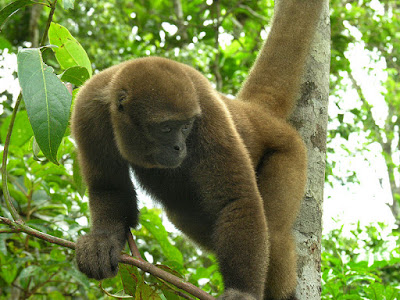My favorite seasons to walk in the woods are fall and winter. For one thing there are fewer bugs to deal with, but I also appreciate how the landscape is more apparent in those seasons. The leaves are down, the undergrowth has died, and I can really see the undulations of the earth and how the tree roots writhe around in the soil. I also like how clearly the local boulders, deposited here by glaciers eons ago, present themselves in the treeless months.
Walking around in the woods makes me want to read and write about local folklore. There's something about a giant boulder, a murky pond or an abandoned stone wall that inspires me to read about witches, ghosts and weird humanoid monsters. Maybe that's strange, but somehow those old stories make me feel connected more to the land here. Conversely, reading those stories makes me want to go out in the woods and explore. I think the local landscape inspired the folk stories, and in turn the folk stories color how I see the landscape. The two are reflections of each other, physical and mental landscapes that overlap.
 |
| A cave a few miles from my house. Creepy, right? It looked like someone had been living in it. |
So when I am in a folklorey state of mind the woods seem like they are filled with strange possibilities. Who knows what I might see? Just around that hill I could encounter a crow that looks at me with knowing eyes, or maybe I'll see a strange footprint in the mud next to a stream. Anything seems possible.
In 1662, Robert Stern of Hartford, Connecticut was walking in the woods outside of that town. He thought at first that he was alone, but he soon realized he wasn't.
Robert Stern testifiethh as follows
I saw this morning Goodwife Seager in the woods with three more women and with them I saw two black creatures like to Indians but taller. I saw likewise a kettle over a fire. I saw the women dance around those black creatures and whiles I looked upon them one of the women, Goodwife Greensmith, said "Look who is a-yonder!" and then then they ran away up the hill. I stood still and the black things came towards me and then I turned to come away... (quoted in David Hall, Witch-Hunting in Seventeenth Century New England, 1991, p.158)
There are a lot of ways to think about that passage. Historically, it comes from the Hartford witch trials of 1662 - 1665. Rebecca Greensmith, mentioned in Stern's testimony, was found guilty of witchcraft and executed. Elizabeth Seager, also mentioned, was also found guilty but ultimately had her sentence suspended by Governor John Winthrop Jr.
You can also think about this passage in a sociological way. The black creatures, clearly demons, resembled Indians. The 17th century New England Puritans had a deep fear of the local Indian tribes. They fought with the Indians over land, and also considered them (as non-Christians) to be in league with the Devil. The Puritans' racial fears colored a lot of other witch trial accounts, where the Devil and his minions are portrayed as resembling Indians. You could also argue that Puritan notions about sexuality led them to think that women were more likely to be witches than men.
 |
| Another cave in the same woods. |
But this story still remains fascinating and a little creepy to me even though I understand the historical and sociological aspects of it. Robert Stern said he stumbled upon witches and demons dancing around in the New England woods. There was a cauldron cooking over a fire. Just think about that for a moment. The woods that surround your house, the woods where you walk your dog and play with your kids, were believed to be the habitation of demons and witches. Who knows what you might find even today if you stray from the path into the trees? It's like we live in the middle of a Brothers Grimm fairy tale.
I have never come upon a witches Sabbath in the woods, but sometimes it feels like I could. I don't think there are witches and demons hiding out there in the forest, but sometimes it feels like there might be. I guess that's what comes from reading too much folklore and living in New England.




